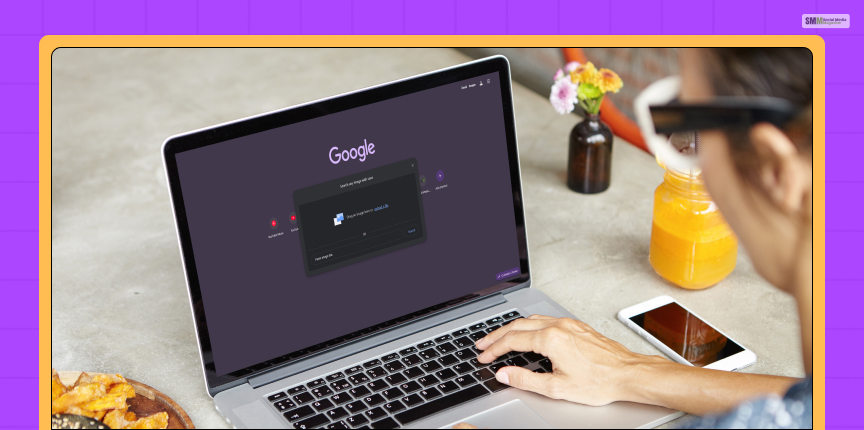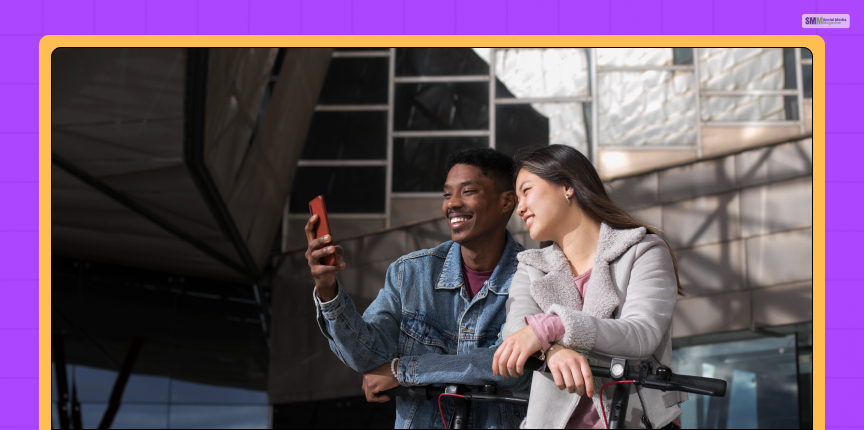Understanding The Key Factors That Influence Property Value Near Water
Nabamita Sinha, 15 hours ago

Nabamita Sinha, 3 days ago

Nabamita Sinha, 7 days ago

Nabamita Sinha, 2 weeks ago


Yes, reverse image search is more about image protection and safety. However, think of a scenario.
You are looking for your school or college buddy who has not been in touch for the longest time, and you want to reconnect with them on Instagram. This is when reverse image search will be of great use.
Furthermore, it is a great feature to detect whether someone has created a fake profile with your image or not.
However, using reverse image search is not always easy as you cannot always use the feature directly on the Instagram platform.
So, considering the usefulness of this feature, we have presented a Social Media Magazine guide. It focuses on understanding the feature’s usage, benefits, important tools, and many other aspects.

Reverse image search Instagram is a useful tool that helps to know whether your image has been copied anywhere or used without permission. It also shows when a photo is taken on Instagram.
Further, this tool uses reverse image search technology. So, here, you don’t need to use text or keywords to search for images.
In addition, being a CBIR or content-based image retrieval technology, it helps you to know the source of the image and other crucial information, including manipulation.
Reverse image search has versatile usage. Along with identifying original sources, as mentioned, it plays a crucial role in image attribution, discovering duplicate and related content, and even fact-checking.
Furthermore, we all do Instagram shopping on Instagram. “Buy on Instagram,” in fact, is huge. So, if you are a regular shopper, you can use this tool to find a similar product or cheaper alternatives.
| Did You Know? Recently, Whatsapp has also tested reverse image search with a new beta version. It is likely to facilitate the detection of disinformation and manipulation of images. The test users are currently assessing the reverse image search. Moreover, once available to everyone, it will be a great feature to use for background information. |

CBIR, or content-based image retrieval, is the main mechanism behind reverse image search. Here, the “content of the image” refers to shapes, colors, textures, features, and objects.
Some popular search engines for reverse image search are Google Images (we all have done it and still do it!), Yandex Image Search, PimEyes, TinEye, etc.
You can use reverse image search on your computer and mobile devices.

First, you must understand that reverse image search works a little differently on every platform.
Still, there are certain basic algorithms behind the way this tool or feature works. Further, these algorithms use computer vision, AI or artificial intelligence, and machine learning to analyze the features/content of an image and find a similar one.
Fingerprinting is the most prominent algorithm used in reverse image search tools. Let’s decode!
Can two fingerprints be similar? No, they cannot. Reverse image search uses the same algorithm, considering each image will have some specific characteristics.
In fact, two images will be more different from each other in comparison to two fingerprints. It is nearly possible to replicate the pixel arrangements in two images.
In fingerprinting, the algorithm measures the following components.
| What Are Fourier Transforms? Fourier Transforms are primarily mathematical tools. In image processing, Fourier transforms break down images into sine and cosine components. They function in three stages. In the first stage, they decompose or break down the images, and in the second stage, all the images are presented in the frequency domain. Finally, Fourier transforms share information about the dissemination of the images on various frequencies. Therefore, you will find the use of Fourier Transforms in many applications. These applications are used for image analysis, enhancement, restoration, and compression. |

You cannot use the tool or feature directly on Instagram (details shared in the next section). Google Reverse Image Search is the best search engine platform for reverse image search Instagram.
Further, many other applications and tools are performing a reverse image search on Instagram. So, let’s know the details.

You can use Google reverse image search on your computers, desktops, and mobiles.
For Desktops And Laptops
If you are using a desktop or a laptop, you need to follow these steps.
For Mobile Devices
However, if you are using an Android phone or tablet, the easiest way is to long press an image in your browser (Chrome) and select Search Google from the options popping up.
Google reverse image search is not free of limitations, and the biggest of these is the inability to conduct a direct search on Instagram. Another major issue is the privacy concern. Google may store and use the images you upload.
| Other limitations of using Google reverse image search are: Google reverse image search does not support TIFF and many other image formats. It will not work for images bigger than 8000 x 6000 pixels. Further, it cannot perform image searches from Instagram, X, and other social media platforms. It does not read or assess blurred or zoomed images. The search results may not have accuracy and Google does not index every image or content shared. So, while Google reverse image search may not identify an image but, it can still be there on the web. In most cases, the list of results is limited to 300 images only. You will still need to manually verify all image search results. |

You can use trusted third-party tools to simplify reverse image search on Instagram. Here is the list of favorites from Social Media Magazine for you.
Our editorial and expert team has assessed these tools based on their features, ratings, reviews, and, of course, first-hand user experience.

Social Media Magazine Rating: 4.8 ⭐
Pocket Pinch: Free for Non-Commercial Use And $300 Onward Per Month for TinEye Alerts
TinEye is a user-friendly tool with simple drag-and-drop features and the ability to add images to the search bar.
| Google’s image search is very good, and their index is larger than ours, but TinEye’s matches are better. We have fewer false positives, and we’re able to find images that have been cropped, edited, or otherwise modified. TinEye |
To use TinEye, you must:
In both methods, you will get the same results.

Social Media Magazine Rating: 4.6 ⭐
Pocket Pinch: Free with Certain Restrictions (Effective from 17th April 2023)
Yandex is the best when it comes to finding similar faces on Instagram or other social media platforms. However, in a few cases, it may not be as accurate as TinEye.
How To Use Yandex?
| Things To Remember While Using Yandex: Are you an iOS user? You will have to use Yandex as a browser application.A mobile version is available for mobile users. |

Social Media Magazine Rating: 4.5 ⭐
Pocket Pinch: Use the Facecheck ID Free Tier
If safety and privacy are your primary concerns, using Facecheck ID is the best alternative to Google reverse image search for you. It does not store any sensitive photos of a user.
| “FaceCheck.ID’s facial recognition AI technology is scary good!” Anonymous FaceCheck.ID User |
It functions with the tagline “Find People Online by Photo.” It also makes its intent clear to make the web free of sex offenders and spammers.
Nevertheless, this is how you can use FaceCheck ID.

Social Media Magazine Rating: 4.3 ⭐
Pocket Pinch: Free
“Need to know the source of this now!” This is the phrase that inspires the name of SauceNAO. No wonder we found it to be the best in tracing the image source.

Social Media Magazine Rating: 4.27 ⭐
Pocket Pinch: Free Download and Installation from Microsoft Store
Bing is a search engine that helps you find an Instagram account similar to yours with the help of an image.
To use Bing for reverse image search, you need to visit the official page of Bing Images and use the scanner icon from there to upload or drag and drop images. You can even paste the image URL link to find similar images.
Bing works for computers as browser extensions and for mobile devices, it works as an application.

Social Media Magazine Rating: 4.2 ⭐
Pocket Pinch: Free
Broad search results and accuracy are the two best features of Berify. You can follow these steps to use Berify.

Social Media Magazine Rating: 4.19 ⭐
Pocket Pinch: Free for Basic Background Checks/Paid Services for A Single Comprehensive Report Start From $20
With a 4.1 rating on Trustpilot, Social Catfish is a reliable tool for reverse image search on Instagram. It works as an investigation platform and assesses the following parameters for the most accurate results.
Because Social Catfish assesses so many parameters, you expect the most accurate result almost every time with it.
Using third-party tools for reverse image search has many benefits and limitations. The table below gives you a brief idea.
| Pros Of Using Third-Party Tools For Reverse Image Search Instagram | Cons of Using Third-Party Tools For Reverse Image Search Instagram |
|---|---|
| Improves your e-commerce experience with visual searches | Finding accurate image matches has become difficult with the explosion of images and content on the web |
| Helps you find information about an image and its source | It is challenging for search engines and tools to assess and identify edited, filtered and cropped images. |
| Ensures the protection of intellectual property | Often, there are strict privacy settings on the uploading platforms. So, these tools or apps may fail to identify the images. |
| Helps create digital content | |
| Helps to find people you want to connect to on socials |

There are many mobile apps for reverse image search. You can use the following options.

Instagram does not allow built-in reverse image search for security concerns. In other words, Instagram has strict policies regarding the protection of privacy and image usage. Along with your images, you can also impose copyright on the metadata of the image.
Further, as a platform, Instagram is very particular about user experience. It does not want to compromise the control over using the platform.
Moreover, because Instagram is a stringent platform focusing on data privacy, reverse image search is less seamless on Instagram compared to many other platforms.

I have already touched upon the benefits of reverse image search on Instagram. Let’s discuss them in detail.
Instagram with 2 billion users worldwide is the third-largest social media platform. We have talked to many industry insiders, and all of them have opined that 1 in every 10 Instagram accounts is fake.
So, even if you go for a ballpark, the number of fake accounts is close to 200 million. 😳 In this scenario, reverse image search can be helpful with the identification of faces and images.
To put it simply, these tools and apps have made it easy to identify fake profiles.
Reverse image search can track down an image and its source. Thus, it always finds the original photographer or creator.
This aspect is crucial for the protection of intellectual property right and the commercial aspects associated with it.
If you want to find similar content for further research or some additional references, you can always use reverse image search.
This will help you in digital content creation or educational research.
With visual searches, you can find similar products or cheaper alternatives on any Ecommerce platform. This helps you to compare the pricing options and strike the best deals.
The CBIR (Content-Based Image Retrieval) algorithm of reverse image search already uses computer vision, AI, and machine learning. You cannot deny that a significant percentage (around 30%) of the web search today is reverse image search.
However, currently, reverse image search Instagram or the process in general face challenges in efficiency and accuracy. While around 50-60% of the results are accurate, the aim is to achieve 100% accuracy with Deep Learning, a wing of machine learning.
Furthermore, to make reverse image research more efficient in the field of e-commerce, we need an integration of virtual reality (VR) and AR or augmented reality.
Read Also:
A self-proclaimed Swiftian, Instagram-holic, and blogger, Subhasree eats, breathes, and sleeps pop culture. When she is not imagining dates with Iron Man on Stark Tower (yes, she has the biggest crush on RDJ, which she won’t admit), she can be seen tweeting about the latest trends. Always the first one to break viral news, Subhasree is addicted to social media, and leaves out no opportunity of blogging about the same. She is our go-to source for the latest algorithm updates and our resident editor.